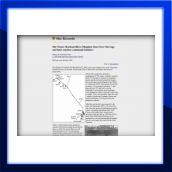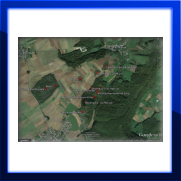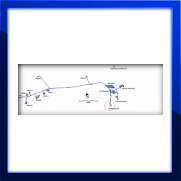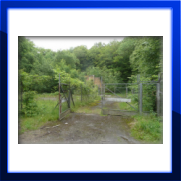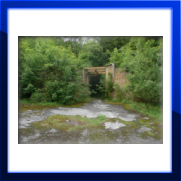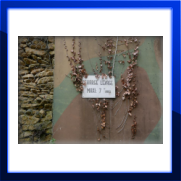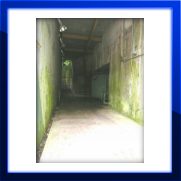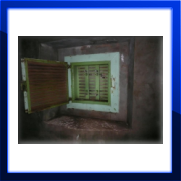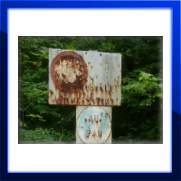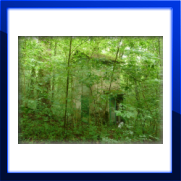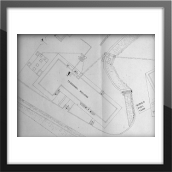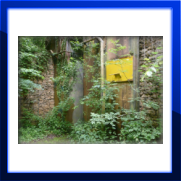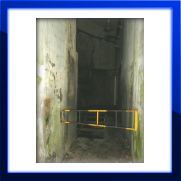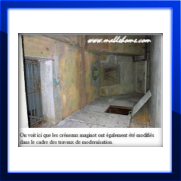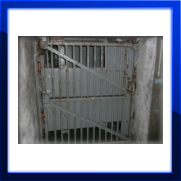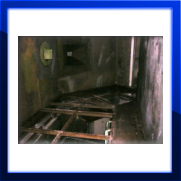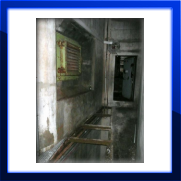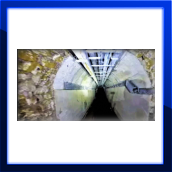Rochonvillers - G.O. Rochonvillers - ACE-High-Journal
Hauptmenü:
- Homepage
-
AIRCENT 1952 > 1958
- Info Seite
- AIRCENT Linienplan
- Technik (Innen- Aussenbereich)
- Fontainebleau / Camp AIRCENT
- A-1. Fontainebleau / Terminal (AIRCENT)
- A-2. Croix d'Augas
- A-3. Melun
- A-4. Jossigny (s.Index)
- A-4. Marly-le-Roi / Terminal (SHAPE)
- A-5. Éméville
- A-6. Margival (Crouy)
- A-6 / D-1. Margival (Laffaux)
- A-7 / D-2. St. Erme
- A-8 / D-3. Poix-Terron (La Bascule)
- B-3. Angevillers (Molvange)
- Brassoir (s.Index)
- Brüssel-Evere / Terminal (NATO)
- C-1. Lüttelforst
- Mönchengladbach / Terminal (2. ATAF)
- C-2. Lammersdorf
-
LANDCENT 1952 >1962
- Info Seite
- LANDCENT Linienplan
- Technik (Innen- Aussenbereich)
- Bann (Kindsbach)
- Donnersberg
- Fontainebleau / Terminal B (LANDCENT)
- Mannheim / Terminal B (CENTAG)
- Mönchengladbach / Terminal B (NORTHAG)
- Münchweiler
- R 1. Dampleux
-
AFCENT/JCA 1962 >1967
- Info Seite
- AFCENT Linienplan
- Technik (Innen- Aussenbereich)
- 1. Fontainebleau, AFCENT HQ
- 2. Fontainebleau - Maintenance
- 3. St. Méry-Bombon
- 4. Bussières (La Haute-Maison)
- 4. La Haute-Maison
- 5. Dampleux
- 6. Lagery
- 7. St. Erme
- 8. Jossigny
- 9. Éméville
- 10. Margival (Laffaux)
- 11. Wahlhausen (ex St.24)
- Camp de Margival, AFCENT WHQ
- 12. Poix-Terron (La Bascule)
- 13. Vilosnes-Haraumont
- 14. Angevillers
- 15. Weiskirchen
- 16. Bann (Kindsbach)
- 17. Münchweiler
- 18. Marlemont
- 19. Vieux Moulins
- 20. Baraque-de-Fraiture
- 21. Maastricht
- Maastricht-Riemst (Bunker "Cannerberg")
- 21. Roclenge-sur-Geer
- 22. Lammersdorf
- 23. Rheindahlen
- Sonstige Stationen
- AFCENT CRICS 1967 >1979
-
AFCENT CIP 67, ab 1967
- Info Seite
- CIP 67 Linienplan
- Technik (Innen- Aussenbereich)
- Arnheim
- Aurich
- Bad Bergzabern (1) alte Liegenschaft
- Bad Bergzabern (2) neue Liegenschaft
- Baden-Söllingen
- Baraque-de-Fraiture
- Barnsdorf
- Battice (Fort)
- Beckum
- Bielefeld (Ebberg)
- Böblingen
- Bonn (Hardthöhe)
- Brockzetel
- Brunssum
- Damme
- Dietenwengen
- Dötlingen
- Drabenderhöhe
- Ellerspring
- Erbeskopf
- Börfink (Bunker-"Erwin")
- Euskirchen
- Feldberg
- Gross Reken
- Hehn
- Herkenbosch
- Himmelsberg
- Hochkelberg
- Hornisgrinde
- Ibbenbüren
- Irndorf
- Kesternich
- Kindsbach
- Kindsbach (Bunker-"Cave")
- Kolbenberg
- Lammersdorf
- Langerkopf
- Lantin
- Leistadt
- Leopoldsburg
- Lübbecke
- Maastricht
- Maastricht - Riemst (Bunker-"Cannerberg")
- Markelo
- Meßstetten
- Meßstetten (Bunker-"Martin")
- Mönchberg
- Münchweiler [Ruppertsweiler]
- Nordhelle
- Nottuln
- Oberabtsteinach
- Obertshausen
- Oldenburg
- Ottenstein
- Pirmasens-Husterhöhe
- Potzberg
- Prüm - Post (Air)
- ACE-High-System Europa
-
ACE-High-System, ACCHAN,ab 1958
- Info Seite
- England
-
ACE-High-System, AFNORTH,ab 1958
- Info Seite
-
Dänemark
- ACE-High System
- Sonstige Objekte
- Norwegen
-
ACE-High-System, AFCENT,ab 1958
- Info Seite
- Link Seiten-Übersicht
-
Deutschland
- ACE-High System
-
Exkursionen (D)
- Info Seite (D)
- Bonndorf - Wutachschlucht
- Freiburg - Bodensee Querweg
- Freudenstadt - Rothirschweg
- Freudenstadt - Holzmichelweg
- Hinterzarten - Ravennaschlucht
- Hinterzarten - rund um den Feldberg
- Kniebis - Lotharpfad
- Lübeck - Stralsund Ostseeradweg
- Pforzheim - Mittelweg
- Pforzheim - Ostweg
- Pforzheim - Westweg
- St Georgen - Pforzheim Wanderweg E8
- Stühlingen - Wehr Schluchtensteig I
- Stühlingen - Wehr Schluchtensteig II
- Triberg - Uhrenträgerweg
- Vossenack - Hürtgenwaldmarsch
- Exkursionen (SP)
- Gedenkstätten
-
Militärische Objekte
- Info Seite
- Air Base
- Bunker, nach WK II
- Munitionslager
- Nike FlaRak Stellungen
- NVA Stellungen
- Pershing FlaRak Stellungen
- Polygone Stellungen
- Transmitter
- Truppenübungsplatz-Kasernen
- U.S. Stellungen
-
WKII Objekte
- Info Seite
- Aurich - Flakstellung
- Bad Bergzabern - Museum
- Bad Münstereifel - FHQ "Felsennest"
- Gemünd - NS-Ordensburg Vogelsang
- Gemünd - Igel Stellung Vogelsang
- Kniebis - FHQ "Tannenberg"
- Lammersdorf - Höckerlinie
- Langschoß - Wasserbunker
- Niedersimten - Museum Gerstfeldhöhe
- Paustenbach - Eifelkreuz
- Schmithof - Höckerlinie
- Seebach (Hornisgrinde) - LVZ
- Simonskall - Museum Sanitätsbunker
-
Städte/Ortschaften
- Info Seite
- Baden-Württemberg
- Bayern
- Berlin
- Brandenburg
- Bremen
- Hamburg
- Hessen
- Mecklenburg-Vorpommern
- Niedersachsen
- Nordrhein-Westfalen
- Rheinland-Pfalz
- Saarland
- Sachsen
- Sachsen-Anhalt
- Schleswig-Holstein
- Thüringen
-
Sonstige Objekte
- Info Seite
- Calmbach - Klinik Charlottenhöhe
- Dannenfels - Ludwigsturm
- Feldberg - Horst Garbe
- Feldberg - Schwarzwald
- Feldberg - Taunus
- Karlsruhe - 2.tes Meeting
- Kniebis - Hotel Alexanderschanze
- Langschoß - Feuerwachtturm
- Mönchengladbach - Flughafen
- Mülheim - Flughafen
- Schwalmtal - Fabrikanlage
- Sinsheim - Technikmuseum
- Viersen-Süchteln Irmgardiskapelle
- Viersen-Süchteln Kriegerdenkmal
- Viersen-Süchten Wasserspeicher
- Weeze - Schloss Wissen
- Wollseifen - das Dorf
- Zivile Bunker
-
Zivile Transmitter
- Info Seite
- Alexanderschanze - Transmitter (Mobil)
- Baden-Baden, Merkurturm
- Bambergerhof - BNetzA Peiler
- Bremen Woltmershausen
- Bremen - Fernmeldeturm
- Dannenfels - Sender Donnersberg
- Düsseldorf - Rheinturm
- Gernsbach - Hohloh
- Gollenberg
- Großhau - Fernmeldeturm
- Lauschied
- Mönchengladbach - FMT
- Nettetal-Hinsbeck
- Nottuln - WDR Sender
- Ober-Abtsteinach - HR
- Reichweiler
- Schiefbahn - Fernmeldeturm
- Schömberg - Sender Langenbrand
- Seebach (Hornisgrinde) - Mobilfunk
- Seebach (Hornisgrinde) - SWR
- Seebach (Hornisgrinde) - Telekom
- Staffel - FMT
- Sulzbach-Rosenberg - Mobilfunk
- Sulzbach- Rosenberg
- Viersen-Bockert
- Viersen-Süchteln - Fernmeldeturm
- Waldböckelheim
- Wildeshausen
- Würselen- Mobilfunk
-
Belgien
- ACE-High System
- Gedenkstätten
-
Militärische Objekte
- Info Seite
-
Transmitter, BEMILCOM
- Info Seite
- Adinkerke, Site 030
- Ben-Ahin, Site Mx
- Battice, Site 024
- Brüssel-Evere / Terminal (NATO)
- Camp Elsenborn
- Court-Saint-Etienne, Site Mx
- D`Hoppe, Site Mx
- Everberg, Site 115
- Genk
- Hannut, Site 055
- Kester-Heide, Site 251
- Kester-Heide, Site Mx
- Langemark
- Latin, Site Mx
- Molenbeek (Site Mx)
- Millen, Site 056
- Millen, Site Mx
- Truppenübungsplatz-Kasernen
- WKI Festungen
- WKII Bunker
- WKII Festungen
- Städte/Ortschaften
- Sonstige Objekte
- Zivile Transmitter
-
Niederlande
- ACE-High System
- Gedenkstätten
- Militärische Objekte
- Städte/Ortschaften
- Sonstige Objekte
-
Frankreich
- ACE-High System
- Gedenkstätten
-
Militärische Objekte
- Info Seite
- Objekte-WKI
- Objekte-WKII
-
Objekte-Maginot-WKII
- Ligne Maginot Übersicht
- 8 S.F. de la Crusnes
-
9 S.F. de Thionville
- Ligne Maginot Übersicht
- 9 S.F. Thionville Übersicht
- Rochonvillers - Abri du Grand Lot
- Angevillers - Camp d`Angevillers
- Rochonvillers - Casemate d`Escherange Ouest
- Rochonvillers - Casemate du Grand Lot
- Rochonvillers - Blockhaus 1 - du Petit Lot
- Rochonvillers - Blockhaus 2 - du Petit Lot
- Rochonvillers - G.O. Rochonvillers Bloc 9
- Rochonvillers - G.O. Rochonvillers
- 10 S.F. de Boulay
- 12 S.F. de la Sarre
- 13 S.F. de Rohrbach
- 14 S.F. des Vosges
-
15 S.F. de Haguenau
- Ligne Maginot Übersicht
- 15 S.F. de Haguenau Übersicht
- Birlenbach - Abri de tir de Birlenbach
- Bremmelbach - Casemate Nord
- Drachenbronn - Casernement de Drachenbronn
- Drachenbronn - G.O. Hochwald Est
- Drachenbronn - G.O. Hochwald Ouest
- Hatten - Abri de Hatten
- Hatten - Abri de tir
- Hatten - Casemate Esch
- Hatten - Casemate la Selz
- Hatten - Observatoire
- Oberhof - G.O. Schoenenbourg
- Pfaffenschlick - Abri de tir Pfaffenschlick Sud
- Rittershoffen - Casemate du Bois 1
- Rittershoffen - Casemate du Bois 2
- Rittershoffen - Casemate du Bois 3
- Polygone Stellungen
- Städte/Ortschaften
- Sonstige Objekte
-
ACE-High-System, AFSOUTH,ab 1958
- Info Seite
- Link Seiten-Übersicht
-
Italien
- ACE-High System
- Exkursionen
-
Militärische Objekte
- Info Seite
- Festungswerke
- La grande Guerra
-
Städte/Ortschaften
- Info Seite
- Affi, Bastia San Michele
- Allumiere
- Agrigento
- Bagolino
- Breno
- Brescia
- Catania
- Collio
- Carrara
- Civitavècchia
- Firenze
- Genova
- Isola di Capri
- Isola di Ischia
- Isola di Procida
- Lago di Garda
- Lago di Idro
- Lago di Iseo
- Lago di Ledro
- Lerici
- Milano
- Monte Etna
- Monte Vesuvio
- Napoli
- Paestum
- Pompeji
- Pozzuoli
- Pisa
- Roma
- Savona
- Sicilia
- Siracusa
- Tuscania
- Tolfa
- Viareggio
- Venezia
- Viterbo
-
Locales NATO / NTTS System
- Info Seite
- Nationaler Linienplan
- Affi, "West Star", Site B
- Aviano, Air Base
- Brescia, Monte Maddalena, Site D
- Cansiglio, Site G
- Cavriana, Site ACE-High
- Collio, Dosso dei Galli, ACE-High
- Comano, Livorno, ACE-High
- Comiso, Air Base
- Concordia Sagittaria, ACE-High
- Erbezzo (Vaccamozzi), Rx Site, Site R
- Ghedi, Air Base
- Grezzana, "Back Yard", Site A
- La Gusella, Site F
- Lughezzano, SatCom F14
- Milano
- Monte Alto (VI), Site E
- Monte Comerlati (VR), Site W
- Motta di Livenza
- Negrar, Monte Tondo
- Padua, Monte Venda
- Piacenza, Air Base
- Pian Cavallo, Site J
- Poggio Renatico
- Sant`Anna D`alfaedo, Tx Site, Site T
- Site M (nicht aktiviert)
- Solbiate Olona
- Treviso - Istrana, Air Base
- Treviso - Sant Àngelo, Air Base
- Verona, Palazzo Carli
- Vicenza, Air Base, 5 ATAF
- Villafranca, Air Base
- Vittorio Veneto
- Volta Mantovana, Site C
-
Griechenland
- ACE-High System
- Städte/Ortschaften
- Türkei
-
NATO CRC, Kommandostand
- Info Seite
- Bunker Übersichtsplan
- England
- Norwegen
- Dänemark
-
Deutschland
- Bodenmais, Luftraumüberwachung (Großer Arber)
- Börfink, Bunker "Erwin"
- Brockzetel, Bunker "Balduin"
- Elmenhorst, Luftraumüberwachung
- Erndtebrück, Bunker "Erich"
- Lauda-Königshofen, Bunker "Gustav"
- Linnich, Bunker "Castlegate"
- Meßstetten, Bunker "Martin"
- Ruppertsweiler, Bunker "Arius-RUF"
- Schönewalde, CRC Bunker "Harald"
- Uedem, Bunker "Udo"
-
Belgien
- Bassenge-Glons, Site CRC
- Mons-Casteau, Bunker "SHAPE Command Center"
- Niederlande
- Frankreich
- Griechenland
- Spanien
-
Italien
- Nationaler Linienplan
-
Affi, Bunker "Weststar"
- Affi, Bunker "Weststar"
- Affi, Bunker "Weststar" Bilddokumentationen 2008-2011
- Affi, Bunker "Weststar" Bilddokumentationen 2016-2019
- Affi, "Weststar" Publikationen
- Affi, Bunker "Monte Moscal"
- Affi, Bunker "San Michele"
- Affi, Heliport Albare
- Erbezzo (Vaccamozi), Rx Site, Site R
- Sant`Anna D`alfaedo, Tx Site, Site T
- Grezzana, Bunker "Back Yard"
- Mondragone, Bunker "Proto"
- Martina Franca, Bunker "3° ROC"
- Padua, Bunker "Monte Venda" 1° ROC
- Rocca di Papa, Bunker "Monte Cavo" 2° ROC
- Sant `Oreste, Bunker "Monte Soratte"
- Türkei
- NATO CAOC, Kommandostand
- NADGE System
- Schweiz, Festungswerke
- NATO SatCom, ab 1968
- RAF UK
-
RAF UK > BAOR, Scatterlink
- Info Seite
- Deutschland
- England
-
BAOR Germany
- Info Seite
- BAOR Übersichtsplan
- Arsbeck, BAD Sub-Depot
- Arsbeck, Rifle Range
- Arsbeck, Training Area
- Birgelen, BFBS Transmitter
- Birgelen, Fernmeldeanlage
- Birgelen, Mercury Barracks
- Brüggen-Bracht, Munitionsdepot
- Brüggen-Elmpt, Air Base Ammunition Compound
- Brüggen-Elmpt, Air Base, Javelin Barracks (Elmpt Station)
- Brüggen-Elmpt, Transmitter
- Hostert, British Miliary Hospital ( Kent School)
- Krefeld, Richtfunk
- Krefeld, Rifle Range
- Krefeld, Bradbury Barracks
- Krefeld, Haynes Barracks
- Lammersdorf, Roetgen
- Mönchengladbach, Rotunda Barracks
- Mönchengladbach, Rotunda Barracks Annex
-
ET-A, Scope Comm, ab 1966
- Info Seite
- ET-A Linienplan
- Belgien
- Deutschland
- England
- Frankreich
- Niederlande
-
486L Medcom, ab 1960
- Info Seite
- 486L Linienplan
- England
- Griechenland
- Italien
- Spanien
- Türkei
- News - Gästebuch Impressum
- Ligne Maginot Übersicht
- 9 S.F. Thionville Übersicht
- Rochonvillers - Abri du Grand Lot
- Angevillers - Camp d`Angevillers
- Rochonvillers - Casemate d`Escherange Ouest
- Rochonvillers - Casemate du Grand Lot
- Rochonvillers - Blockhaus 1 - du Petit Lot
- Rochonvillers - Blockhaus 2 - du Petit Lot
- Rochonvillers - G.O. Rochonvillers Bloc 9
- Rochonvillers - G.O. Rochonvillers
ACE-High-System, AFCENT,ab 1958 > Frankreich > Militärische Objekte > Objekte-Maginot-WKII > 9 S.F. de Thionville
Ligne Maginot - Règion Fortifèe de Metz - 9 S.F. de Thionville
Basisseite "Militärische Objekte"- Rochonvillers - Gros Ouvrage Rochonvillers [G.O.] [Artilleriewerk] [Werknummer A8]
Basisseite "AIRCENT Microwave System" - (Bloc 7)
Basisseite "LANDCENT Microwave System" - Station Angevillers (Bloc 7)
Basisseite "NATO Bunker, Kommandostände" - Gros Ouvrage Rochonvillers - [Maginot Linie] Rochonvillers
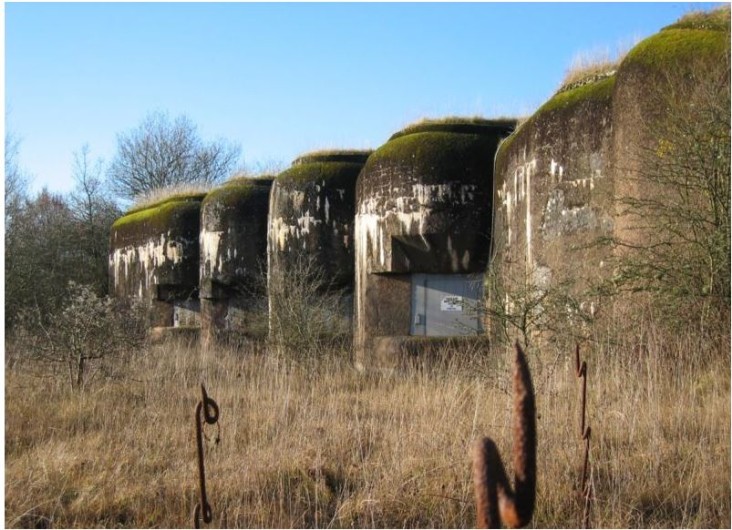
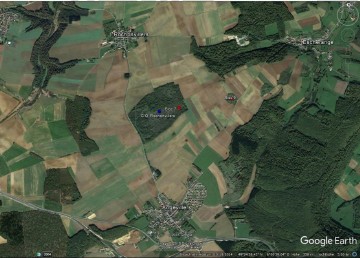

Rochonvillers - Gros Ouvrage Rochonvillers [G.O.] [Artilleriewerk] [Werknummer A8]
Ligne Maginot - Règion Fortifèe de Metz - 9 S.F. de Thionville
Position : 49°24′09″N/06°02′22.99″O
Position : 49°24′09″N/06°02′22.99″O
Höhe üNN : 386 m
Status : Aufgegebene Nutzung
Status heute : Militär Terrain
Ansicht : Bloc 5 du gros ouvrage de Rochonvillers, (1) [2]
________________________________________________________________________________________________________________________________________________________
"Artilleriewerk (frz. Gros Ouvrage) [G.O.]
Innerhalb der Maginot-Linie stellten diese Werke die größten Befestigungsanlagen dar. Immer findet sich hier die große räumliche Trennung zwischen Kampfblöcken und Eingangsanlagen, um abseits vom Gefecht neue Mannschaften und Munition nachführen zu können. Zwischen 250 und 1100 Mann waren darin untergebracht und konnten dank eigener Stromversorgung, großen Vorräten an Lebensmitteln, Trinkwasser, Kraftstoff und Munition für längere Zeit völlig autark den Feuerkampf führen. Bestehend aus 4 bis 17 Kampfblöcken verfügten diese Anlagen je nach ihrem Auftrag über eine bestimmte Anzahl von 7,5-cm-Kanonen, 13,5-cm-Haubitzen und 8,1-cm-Granatwerfern." [5]
________________________________________________________________________________________________________________________________________________________
Link Seiten, Wikipedia
Link Seiten, sonstige Publikationen
Thema - Rochonvillers (Maginot Line Gros Ouvrage and later nuclear command bunker) [4]
Autor - Nick Catford
Quelle - Nick Catford
URL - subbrit.org.uk
________________________________________________________________________________________________________________________________________________________

Ouvrage Rochonvillers [3]
________________________________________________________________________________________________________________________________________________________
Bilddokumentationen, Munitions Entry, NATO Bunker, Aussenbereich, 2012
Bilddokumentationen, Personnel Entry, NATO Bunker, Aussenbereich, 2012
________________________________________________________________________________________________________________________________________________________
Beschreibungen
"Ouvrage Rochonvillers is one of the largest of the Maginot Line fortifications. Located above the town of Rochonvillers in the French region of Lorraine, the gros ouvrage or large work was fully equipped and occupied in 1935 as part of the Fortified Sector of Thionville in the Moselle. It is located between the petit ouvrage d'Aumetz and the gros ouvrage Molvange, facing the border between Luxembourg and France with nine combat blocks. Rochonvillers saw little action during World War II, but due to its size it was repaired and retained in service after the war. During the Cold War it found a new use as a hardened military command center, first for NATO and then for the French Army.
NATO command center
Munitions entry and perimeter fence in 2011
With France's acquisition of nuclear weapons in 1960, the Maginot fortifications began to be viewed as an expensive anachronism. Funding was provided for maintenance, but for little more. The Maginot Line, while obsolete in terms of its armament, was viewed as a series of useful deeply buried and self-sufficient shelters in an era of air power and nuclear weapons. In 1960 the French Army initiated inquiries among the other French forces and among NATO members concerning the use of Maginot fortifications as storage depots or as command centers. In 1961, after discussions with the Americans and West Germans, Rochonvillers, Molvange and Soetrich were placed at the disposal of NATO. Rochonviller's main magazine, with its two entries and circulation loop crossed by five galleries, was made into a wartime command center for the NATO Central Army Group (CENTAG) (normally located at Fontainebleau) at a cost of 380 million francs. Rochonvillers functioned in this role until 1967, when France withdrew from NATO's integrated command structure. The command center is located close to and between the personnel entry and the munitions entry, with connections to each. It is more than a kilometer from the command center to the main combat blocks via the main underground gallery.
CENTAG's headquarters were moved to Brunssum, the Netherlands, where the deactivated Hendrik coal mine was available for use. In 1971 the names of the Maginot ouvrages were declassified by the French military. At the same time, Rochonvillers was demoted from a fortified position of the first rank to a lower status, foreshadowing a general divestment of the Maginot Line's function as a fortification.
French Army command center
After deactivation in 1967, Rochonvillers was renovated in 1980 as the French First Army's hardened command center. Work included replacement of the ventilation and filtration system and construction of a blast wall a short distance in front of the main entry. The installation was planned to house 500 people for an extended period, immune to the effects of electromagnetic pulse, radioactivity, chemical weapons and all but a direct hit with a nuclear weapon. The electrical generating plant and underground barracks were renovated. Most exposed concrete faces in the entry blocks were covered with earth as a blast shield, while the combat blocks themselves were used only as antenna mounts. The peacetime 1st Army headquarters was moved from Strasbourg to Metz in 1989, in part to be closer to Rochonvillers. From 1981 to 1998 the command center was maintained by a small staff in between full-scale exercises. With the disappearance of the Soviet threat, the command center was deactivated.
The Camp d'Angevillers is the above-ground component associated with the command center, located to the northeast of Angevillers. The entries to the ouvrage and the command center are located just to the northeast of the camp, with more than a kilometer of galleries connecting to the combat blocks on the hill above Rochonvillers." [2]
French Army command center, emergency exit
Wie der YouTube Link, "Die Komandozentrale im NATO Kommandobunker der französischen Luftstreitkräfte, Teil 1 bis 3" berichtet, führt ein Notausgang zu einem auf dem Camp d`Angevillers gelegenen Gebäude. (2)
________________________________________________________________________________________________________________________________________________________
Bild - Quellenangaben
(1) Google Earth/Google Street
(2) Die Komandozentrale im NATO Kommandobunker der Luftstreitkräfte
________________________________________________________________________________________________________________________________________________________
Text - Quellenangaben
[1] Wikipedia, Liste der Ouvrages der Maginot-Linie
[1] https://de.wikipedia.org/wiki/Liste_der_Ouvrages_der_Maginot-Linie
[2] Wikipedia, Ouvrage Rochonvillers
[2] https://en.wikipedia.org/wiki/Ouvrage_Rochonvillers
[3] Wikipedia, Description - Ouvrage Rochonvillers of the Maginot Line - Date 23 March 2010 - Source Own work - Author Acroterion
[4] Nick Catford, Rochonvillers (Maginot Line Gros Ouvrage and later nuclear command bunker
[5] Wikipedia, Maginot Linie
Homepage | AIRCENT 1952 > 1958 | LANDCENT 1952 >1962 | AFCENT/JCA 1962 >1967 | AFCENT CRICS 1967 >1979 | AFCENT CIP 67, ab 1967 | ACE-High-System Europa | ACE-High-System, ACCHAN,ab 1958 | ACE-High-System, AFNORTH,ab 1958 | ACE-High-System, AFCENT,ab 1958 | ACE-High-System, AFSOUTH,ab 1958 | NATO CRC, Kommandostand | NATO CAOC, Kommandostand | NADGE System | Schweiz, Festungswerke | NATO SatCom, ab 1968 | RAF UK | RAF UK > BAOR, Scatterlink | BAOR Germany | ET-A, Scope Comm, ab 1966 | 486L Medcom, ab 1960 | News - Gästebuch Impressum | Generelle Seitenstruktur

